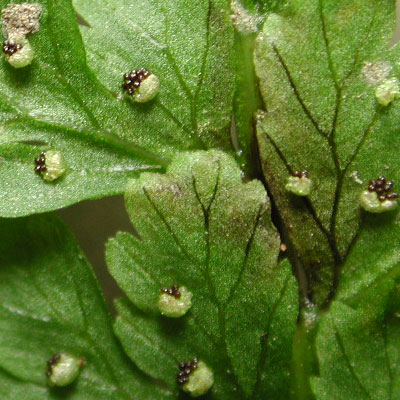| Cystopteris Earlier placement: | ||
Bladder fern | ||
|
Etymology
Greek: kystos, bladder + pteron, wing, which describes the pinnae. Note that the ancient Greeks used pteris to describe all ferns. The indusium looks like an inflated bladder.
Description
Rhizome: short- to long-creeping, scaly.
Frond: deciduous, the stipe bases persistent, storing starch, monomorphic. Stipe: grooved, hairy or glabrous, vascular bundles: 2, round or oblong. Blade: 1-3 pinnate-pinnatifid, ovate-lanceolate to deltate, membranaceous to herbaceous, absent or of uniseriate, multicellular hairs in pinnae axils or of unicellular, gland-tipped hairs below. Pinnae: anadromous, costae grooves above continuous from rachis to costae, segments serrate-dentate, veins free, simple or forked, ending at the margin. Sori: round, in 1 row between midrib and margin, indusium: young: hood-shaped, often falling at maturity, beneath sorus on midrib side, sporangia: brown. |
|
|
|
The sporangia of Cystopteris tenuis are fully exposed at maturity. Photo: Robert W. Freckmann, with permission. |
